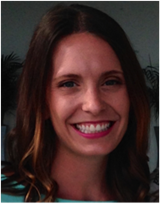 Sara R. Aridas, Consultant, Safety & Leadership Solutions
Sara R. Aridas, Consultant, Safety & Leadership Solutions
What’s in a word? Most people use the words accidents, mistakes, and failures interchangeably. However, when you’re focused on preventing safety-‐related mishaps understanding the distinctions can be helpful.
In a recent book called The Upside of Down, Megan McArdle does a great job of explaining the
differences between accidents, mistakes, and failures.
For starters, accidents and mistakes are basically the opposite of each other.
Accidents refer to events you could not foresee, predict, or plan for. Usually, there’s not much
you can learn from an accident because there was no judgment in error. McArdle describes a friend’s harrowing experience involving a rental car. Her friend rented the vehicle from a reputable
company, but the steering system failed without warning. Even though it resulted in a five-‐car
pileup with vehicles careening across the median strip, the driver walked away unharmed.
There was no operator error or real lesson to be learned.
Mistakes are the instances when, with
hindsight, you see things that you could and perhaps should have done differently, or better. If
our car breaks down because we’ve ignored the blinking service light, that’s a mistake—not an
accident. We all make a lot more mistakes than we realize. Because they don’t end in disaster most
of the time, we often receive no feedback about the error of our way. For example, we drive
while sleepy far more often than we crash. But that can change in an instant.
McArdle describes a failure as “a mistake operating without a safety net.” These oversights
often result in a catastrophic event or near-‐disaster. Too often, companies wait until a
failure occurs before they take stock of error-‐ridden people, equipment, and processes.
By purposefully looking for mistakes, companies can learn to build the right kind and number of
safeguards that are necessary to prevent failures—the kind of disasters that can really hurt
a company’s bottom line or reputation.
About the Author
Sara R. Aridas, B.A., Ms. Aridas held marketing and public relations positions before becoming a full-time consultant. She spent four years working with hospitals and healthcare systems across the country as they adopted, implemented, and upgraded their electronic record systems, which enabled Sara to identify workflow redesign and team-building opportunities, as well as critical gaps between workplace policy and practice. Protecting and advancing the safety of people and the security of data was central to every client engagement. She is currently a Consultant with Safety & Leadership Solutions, www.yoursls.com.
« Return to Newsletter